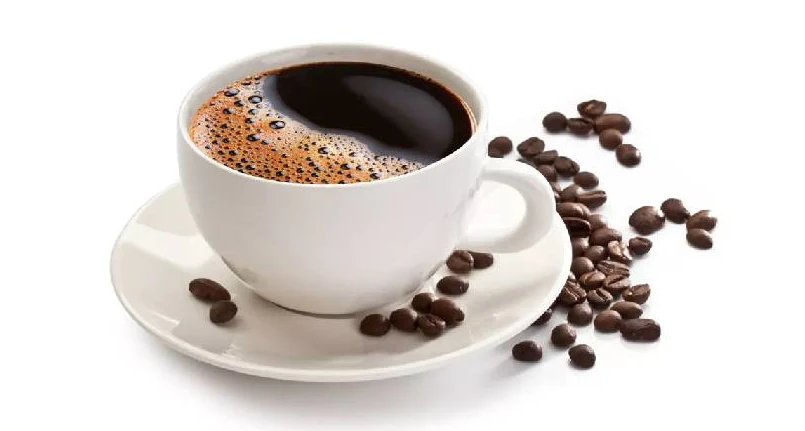Generality
Gout is a disorder of purine metabolism, characterized by:
- Elevated serum urate levels ( hyperuricemia );
- Formation of uric acid deposits in various locations ( tophi );
- Acute joint inflammatory attacks ( monoarticular arthritis ), with urate deposits in the cartilages ;
- Kidney disease ( gouty nephropathy ):
Well known since antiquity and described by Hippocrates , Celsus and Galen, gout affects approximately 0.3% of the European and North American population today. Once considered a prerogative of the wealthier social classes (Suetonius called it ” morbus dominorum “), it is actually a disease with a strong genetic component, linked only minimally to lifestyle.
Gout is an almost exclusive prerogative of the male sex (about 95% of cases) and begins, on average, between the ages of 30 and 50.
A blood test or taking a sample of fluid from the joint swelling can help confirm the diagnosis.
A change in lifestyle habits, together with adequate therapy, is able to keep the symptoms under control.
Hyperuricemia
Gout is the consequence of chronic hyperuricemia .
A person who, after 5 days on a hypopuric diet and without taking drugs that affect uricemia ( vitamin C , vitamin PP , salicylics, diuretics ), has blood uric acid values higher than: is considered hyperuricaemic:
- 7 mg/dl if man
- 6.5 mg/dl if female
- Once 9 mg/dl is exceeded, the risk of gout becomes high and specific drugs are administered
Hyperuricemia is classified as:
- Primary : if it is not the result of an acquired disease;
- Secondary : when it derives from a morbid alteration of another type or from taking specific drugs.
Things
GOUT is a major uric acid deposition disease . The latter represents the final product of purines and is formed in the body from the metabolism of both endogenous (de novo synthesis) and exogenous (derived from the diet) purines. Various conditions can cause an elevation in the serum uric acid level, such as: alcoholism , obesity , states of high metabolic turnover (tumor lysis and myeloproliferative diseases), some drugs (including salicylates and diuretics) and diets rich in purines (e.g. . meat ).
Even rare genetic diseases can cause HYPERICEMIA , with and without urate deposition.
Chronic hyperuricemia is a harmful condition for the body, as it is the pathogenetic basis for the development of monosodium urate deposits (UMS) in various organs and tissues.
If left untreated, the consequences associated with this situation can be disabling, especially when cardiovascular , renal and joint complications arise .
Gout can result from excessive uric acid production and/or decreased excretion .
In addition to increased blood sugar, clinical features of gout include attacks of acute inflammatory arthritis with redness, swelling, and pain in the joints . In the most serious cases, the formation of nodules – called tophi – is observed, due to the deposition of monosodium crystals of uric acid, surrounded by an amorphous matrix.
The triggering factors for arthritis attacks are alcohol abuse and food excesses, protracted fasting and joint trauma, as well as prolonged intense efforts .
Causes
Gout can basically be caused by:
- Enhanced synthesis of purines resulting in hyperproduction of uric acid;
- Decreased renal excretion of uric acid*.
* Purines are nitrogenous substances that enter the composition of DNA . They can be endogenous (produced by body metabolism ) or exogenous (resulting from food degradation). Their catabolism gives rise to uric acid, whose persistent increase in the plasma in turn gives rise to gout.
The first condition (1) is often hereditary and can in any case be aggravated by an increased introduction of purine compounds in the diet. In the second case (2) the hyperuricemia is due to the decreased efficiency of the kidney in the elimination of uric acid.
Traditionally the onset of gout is attributed to an exaggerated intake of food . Although this factor, together with alcoholism, a sedentary lifestyle and the abuse of certain drugs, is in any case predisposing, its contribution tends to be marginal.
Symptoms
In chronic forms, nodules of variable size called tophi may appear . These uric acid deposits form initially around the interphalangeal and metacarpal and/or metatarsophalangeal joints. Subsequently, they also appear extra-articularly, as in theAchilles tendon and outside of the ear . Their color, initially pink- salmon then becomes yellowish-white.
Gout also facilitates the formation of urinary stones and lithiasis up to compromising, in an advanced stage, the entire renal function .
Gout: Clinical Features
- Involvement of one joint at a time (monarticular arthritis), often originating in the big toe joint
- Sudden onset;
- The affected joint appears warm, red, and shiny;
- Excruciating pain;
- Possible malaise and fever ;
- Recurring attacks involving other joints, possibly lasting about a week;
- Subcutaneous formation of gouty tophi, nodules that collect crystals of uric acid.
Diagnosis
The diagnosis of chronic hyperuricemia with urate deposits (gout) should be suspected in the presence of factors that favor the increased production and/or reduced excretion of uric acid.
The assessment includes:
- Anamnesis : involves the collection of information relating to uric acid levels resulting from previous examinations, the presence of concomitant pathologies, family history, use of drugs, foods and beverages.
- Physical examination : should look for evidence of arthritis with redness, swelling, and pain in the joints ; the attacks begin affecting above all the big toe, with a subsequent extension to other parts of the body, such as ankles , knees , wrists and elbows , causing burning and redness.
- Laboratory tests (uricemia) : Hyperuricemia is the major risk factor for gout and can also be used as a diagnostic marker, although some gouty patients demonstrate normal serum uric acid concentration.
In addition to these investigations, the doctor may indicate the execution of an arthrocentesis to look for the presence of crystals and an X-ray of the joints involved to look for deposits or signs of joint pain.
TreatmentGout Medicines and Gout Remedies
Gout therapy is based on the control of uric acid metabolism.
In the event of an acute attack of monoarticular arthritis, it is advisable to immobilize the joint by placing it at rest and uncovering the painful area.
Medicines
Under medical supervision you can also take:
- NSAIDs ;
- Colchicine (a toxic antimitotic alkaloid which promotes the excretion of uric acid, endowed, among other things, with good analgesic and anti-inflammatory properties ).
In the case of gout, the intake of certain drugs must be suspended, such as certain diuretics, cortisone , aspirin and derivatives. On the other hand, chronic hyperuricemia will be treated with medicines able to inhibit the synthesis of uric acid (ie allopurinol ) or favor its elimination (uricosuric drugs: probenecid or sulfinpyrazone). The administration of these drugs must never be initiated during an acute episode of gout.
Dietary measures and lifestyleGout Diet and Example Gout Diet
The exaggerated supply of purines with food is an extremely rare but still possible cause, especially in predisposed subjects. For this reason, pharmacological therapy is accompanied by dietary therapy which involves the elimination of foods rich in purines and alcohol , combined with a caloric moderation necessary to promote weight loss.
In the case of gout , it is also essential to have an adequate intake of water , in order to prevent the formation of kidney stones .
Other articles on ‘Gout and Hyperuricemia’
- Uricemia and uric acid
- Gout – Medicines for the treatment of Gout
- Hyperuricemia diet. Diet for gout
- Gout – Hyperuricemia – Gouty arthritis – Herbal medicine




